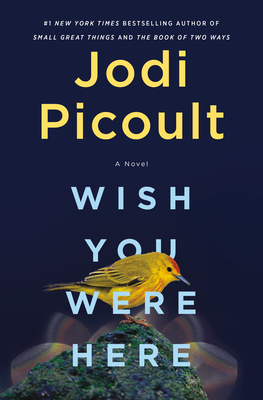
Wish You Were Here:
Chapter 15: Fifteen
by Picoult, JodiChapter Fifteen, titled “Wish You Were Here,” is strikingly minimal in its content, consisting of only two words: “Go away.” This brevity suggests a deliberate choice by the author to convey a powerful message through simplicity. The chapter’s tone appears dismissive or confrontational, possibly reflecting a character’s emotional state or a pivotal moment in the narrative. The lack of additional context forces readers to interpret the meaning based on preceding events or themes.
The chapter’s title, “Wish You Were Here,” contrasts sharply with its content, creating an ironic or bittersweet tone. While the title evokes a sense of longing or absence, the directive “Go away” implies rejection or solitude. This juxtaposition may highlight a conflict between desire and reality, or it could symbolize a character’s internal struggle with attachment and detachment. The chapter’s brevity amplifies its emotional impact, leaving room for multiple interpretations.
The sparse wording of the chapter could serve as a turning point in the narrative, marking a moment of defiance, resignation, or emotional rupture. Its placement in the book suggests it holds significance, whether as a standalone statement or a reaction to prior events. The author’s choice to isolate these words emphasizes their weight, inviting readers to ponder their implications for the story’s broader themes of connection, separation, or autonomy.
Ultimately, Chapter Fifteen’s effectiveness lies in its ambiguity and economy of language. By stripping the chapter down to its essence, the author challenges readers to engage deeply with the text, inferring meaning from what is left unsaid. The chapter’s starkness may resonate as a reflection of human emotions that are often simple in expression yet complex in origin, leaving a lasting impression despite its brevity.
FAQs
1. What is the literal and potential symbolic meaning of the phrase “Go away” in this chapter?
Answer:
Literally, the phrase “Go away” serves as a direct and abrupt statement, possibly reflecting a character’s desire for solitude or rejection of another’s presence. Symbolically, it could represent themes of isolation, emotional distancing, or a turning point in a relationship. The minimalistic nature of the chapter suggests that these two words carry significant weight, inviting readers to interpret the context—whether it reflects frustration, grief, or a metaphorical dismissal of an idea or past attachment. The lack of additional context amplifies the phrase’s ambiguity, allowing for multiple analytical layers.2. How does the chapter’s extreme brevity impact its thematic or emotional effect?
Answer:
The chapter’s brevity—reducing the content to just two words—creates a jarring, impactful moment. This stylistic choice forces readers to pause and reflect on the weight of the phrase “Go away,” emphasizing its emotional gravity. The absence of elaboration might mirror themes of abrupt endings, unresolved tension, or the inadequacy of words in certain situations. It also challenges readers to engage actively with the text, inferring possible scenarios or emotional states from minimal information, thus deepening their interpretive involvement.3. In what ways could this chapter serve as a narrative or structural device within the larger book?
Answer:
This chapter could function as a pivotal moment or breaking point in the narrative, marking a shift in tone, relationship dynamics, or plot direction. Its placement might signal a character’s emotional climax, a rejection of prior events, or a transition into a new act. Structurally, its brevity could contrast with longer, more detailed chapters, highlighting its significance through juxtaposition. Alternatively, it might represent an intentional “pause” or rupture, disrupting the reader’s expectations to refocus attention on subtext or unresolved conflicts.4. What creative techniques does the author employ by leaving the chapter’s context unresolved?
Answer:
The author uses ambiguity as a technique to provoke reader engagement, encouraging speculation about the speaker, audience, and circumstances surrounding “Go away.” This open-endedness fosters active interpretation, allowing the phrase to resonate differently based on individual perspectives or preceding plot points. The technique also mirrors real-life communication, where brief utterances often carry layered meanings. By omitting context, the author may also underscore themes of miscommunication, isolation, or the limitations of language itself, inviting readers to “fill in the gaps” with their own emotional or analytical responses.5. How might a reader’s interpretation of this chapter change if it appears early versus late in the book?
Answer:
Early in the book, the chapter might read as an enigmatic hook, setting a tone of tension or mystery that subsequent chapters gradually clarify. Readers could interpret it as foreshadowing conflict or a character’s defensive stance. Late in the narrative, however, it might signal resolution or collapse—a culmination of built-up emotions or relationships fracturing. The timing affects whether the phrase feels like a provocation, a climax, or a farewell. Placement also influences how much subtext readers can infer from prior events, making the chapter’s impact dynamic and structure-dependent.
Quotes
1. “Go away.”
This stark two-word statement serves as the entire content of the chapter, making it both the most significant and only notable quote. Its brevity and directness create a powerful, dismissive tone that could represent a turning point in the narrative or a character’s emotional state.
